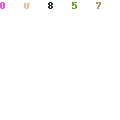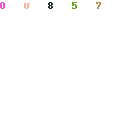
Fifty years is just a blip in the long history of horology. But, Corum, founded in 1955, is a young watchmaker that achieved significant distinction. Rene Bannwart along with his cousin Simone and her father Gaston Ries founded the Corum watch brand in La Chaux-de-Fonds in Switzerland. They were dedicated to the ideal of ‘innovation’ in style.
Sans-Heures
One of the early Corum models of the young watchmaker was getting ready to be displayed in a major exhibition in 1958. In one of the brand’s marvelous moments of serendipity, the dial supplier of the new Corum model failed to deliver the dial in time.
Improvising at the last minute, Bannwart procured substitutes, but these only had Corum printed on them. The hour marking had been left out! With nothing else to do, Bannwart decided to call the model “Sans-Heures” (without – hours) and displayed the watch. The concept became an instant hit and has been copied by almost every watch maker in the last 50 years.
Corum has always been about style. From the outset Rene Bannwart was obsessed with the questions of style. Why do so many watch makers keep producing variations of the same old style, decade after decade? Could not something fresh and new be done? And so, style innovation held the key to Corum during all these 50 years. Admiral’s Cup, Coin watch, Romulus, Golden bridge and Bubble are all models with distinctive style. One of the most exquisite and unusual design is their famous ‘Rolls Royce’. RR which features the trademark Rolls Grille as the body and face of the watch complete with a tiny hood ornament. Their styles are strong and unique and their craftsmanship very high.

Admiral’s CupCorum is the first brand that set the stage for ‘Haute Horologerie’. The famous regatta, the Admiral’s Cup Race was first held in 1957 and the Corum Admiral’s Cup was introduced three years later in 1960. Admiral’s Cup is available in 40 mm, 41 mm, 44 mm and 48 mm as well as in versions with chronograph complication or just time and date. Other than the most distinctive design, Admiral’s Cup went well beyond stainless steel and gold in its use of material. Admiral’s Cup challenge Regatta 2007 uses titanium and rubber fusion as materials of construction. With no full stop to style, the most audacious material ever fused in the watch making industry was a limited edition, Admiral’s Cup made in Tungsten – one of the heaviest materials in the world.
Romulus
Introduced in 1966, the Corum Romulus was the first watch ever to display the hour numerals on the bezel. It engraves the laurel crown in honour of Romulus, the founder of ancient Rome. Romulus is sought after by all watch collectors.
Golden Bridge
In a striking combination of imaginative style and technology, Corum designed this watch around a linear movement. Then the designer decided to put four sapphire sides in order to make the movement look like a floating bridge in mid- air. The Golden Bridge comes in 18 carat gold or platinum. A stunning piece from Corum!
Coin watch
One of the most recognisable Corum watches - the Coin watch, is still available almost 50 years after its debut. The $ 20 {lsquo}Double Eagle’ or the $ 10 {lsquo}Liberty’ gold coins are delicately sliced in the middle to form the dial and the back of the watch. The obverse and the reverse side of the coin hold the movement between them.
Stepping into America
The Bannwart family continued to manage Corum till December 1998. In the 50 years of existence, Corum brands have been incredibly popular in the US more than other parts of the world.
American businessman Severin Wunderman who had been keeping an eye on Corum for many years acquired the company in 2000 with his personal finances and named it as Severin Montres Ltd. Wunderman’s son, was the President of the company and in 2007, a great horologe professional Antoine Calce, joined him as the CEO.
They both want to carry forward the renowned motto of Corum. The watch brand displays the kind of creativity and innovation that plays a major role in setting new trends, something which it has always been at ease with and firmly intends to continue in the future.
If you are looking for style, sport a Corum.
Its buckles and crown would have been signed with Corum’s distinctive ‘key’ logo that says “This is the key to style”.
This first appeared in Smartbuy section of BusinessLine of Sep 3rd, 2008